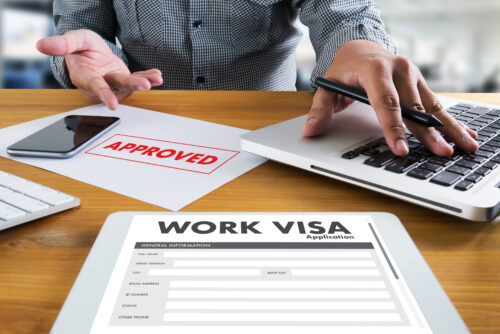
The H-1B visa is the most popular employment-based visa for nonimmigrants who want to work in the United States. Being as sought out as it is, it is imperative to understand how the H-1B visa works, as many people are unaware that there is an annual cap that limits the number of H-1B visas USCIS can issue per federal fiscal year. This can hinder your ability to obtain an H-1B visa. If you are seeking an H-1B visa, contact a qualified Middlesex County, New Jersey, Business Immigration Lawyer who can help you understand how the cap works. Keep reading to learn more about the H-1B visa annual cap.
What should I know about the H-1B annual visa cap?
In the U.S., employers can temporarily hire foreign workers in specialty occupations requiring specialized knowledge in a particular field and a bachelor’s degree or equivalent in the specific specialty. To be eligible for an H-1B visa, you must have a job offer from a U.S. employer and meet the academic qualifications. H-1B specialties may include mathematics, science, medicine, education, business, architecture, engineering, art, accounting, or law.
Since the H-B visa is one of the most sought-after nonimmigrant employment-based visas, the United States Citizenship and Immigration Services (USCIS) and Congress cap the number of visas that can be issued annually. Congress has the cap currently set at 65,000 slots. However, it is critical to note that 6,800 are reserved for Chile and Singapore nationals due to the free trade agreement. That said, other applicants are left with 58,200 open slots each year. Alongside the above 65,000 slots, an additional 20,000 visas are available exclusively to applicants with a U.S. master’s degree or higher degree from a reputable institution. This is referred to as the H-1B visa master’s cap. With the master’s cap, the U.S. issues a total of 85,000 H-1B visas every federal fiscal year. The petitions not selected will be re-entered into the regular pool. This may seem like a large number. However, the available slots get filled up within hours of the application window opening due to how many individuals seek to work and reside in the U.S.
How does it work?
While the cap window is open, you must file your H-1B petition. Any H-1B petition submitted after the cap window will be rejected. Once you have filed your petition and the congressional cap has been met, USCIS will put your petition through the computer to be randomly selected. Firstly, 20,000 petitions will randomly be chosen for the master cap. From here, 65,000 petitions will be randomly selected. You can re-submit your petition during the next fiscal year if you are not chosen for an H-1B visa.
For more information on the H-1B annual visa cap, contact a seasoned lawyer from the Law Offices of Aditya Surti, LLC. Our firm is prepared to help you navigate this process to obtain a temporary nonimmigrant employment-based visa.